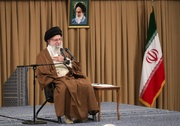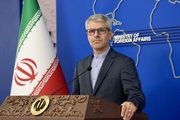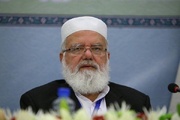It’s why the 1997 Kyoto accord was such a botched job: with the U.S. refusing to sign and China under no obligation to control its greenhouse gas emissions, over 40 percent of the world’s total emissions were excluded from the treaty.
The U.S.-Chinese quarrel could have the same poisonous effect on the attempt to negotiate a replacement treaty in Copenhagen by the end of this year, so Washington and Beijing need to sort out their differences first. This can only be settled at the highest level, and there isn’t much time left, so what is needed is a summit meeting between the two countries to make the deal.
John Holdren, President Obama’s chief scientific adviser, has been pressing for such action for years. In an interview last year, he told me: “I run research projects in collaboration with government organizations, think tanks, universities in China and India on climate change and what to do about it. And what I can tell you is that the Chinese and the Indians are not less knowledgeable and not less worried about this problem than we are in the United States or Canada or Europe.”
“They are waiting for us to lead, in part because we in the industrialized world caused most of it up until now. But they understand that climate change is already harming them. You go and sit privately with the political leaders of China and they will quote to you the results of their own Chinese climate scientists’ studies showing that China is being seriously harmed today by climate change.”
“The Chinese and the Indians in my view are going to sign on to a global approach to reducing greenhouse gas emissions within three to five years of the United States making the transition from laggard to leader. They’re waiting for us to do it, but they’re going to join.”
There was no announcement about a U.S.-China summit following Secretary of State Hillary Clinton’s visit to Beijing on February 21, although Obama and President Hu Jintao are already scheduled to meet during the G20 summit in London in April. However, there are many hints and signs that a summit is coming up quite soon. The most striking one was the publication in early February of a report jointly published by the Asia Society and the Pew Center on Global Climate Change.
The report was produced by a committee chaired by Stephen Chu, Obama’s new energy secretary, and John Thornton, tipped as the new U.S. ambassador to China. John Holdren was among the contributors. It explicitly calls on President Obama to hold a summit with the Chinese leadership on the climate issue.
Zhou Wenzhong, the Chinese ambassador to the United States, attended the launch of the report at the Brookings Institution and spoke in much the same terms: “Cooperation between our two countries on energy and environmental issues will enable China to respond to energy and climate change issues more efficiently, while at the same time offering enormous business opportunities and considerable return to American investors.”
If the summit does happen, its main job will be to recognize the fact that China and the U.S. cannot be expected to make equal cuts in their emissions, and that China needs help in meeting even a less demanding commitment to cuts. For a decade American politicians have been unwilling to accept that it has to be a very lopsided deal, and now they have to bite the bullet.
The problem is history. The United States, like the other fully industrialized countries, has been emitting greenhouse gases for a long time, and is very rich as a result. China, like the other rapidly industrializing countries, has only been producing large emissions for a couple of decades, and is still relatively poor.
The two countries now emit about equal amounts of carbon dioxide each year, but China has four times as many people, so its per capita emissions are still only a quarter as big. Over time, the United States has put three times as much carbon dioxide as China into the atmosphere. So the United States, in Beijing’s view, has a moral obligation to make much deeper cuts, much sooner, than China.
China must at least stabilize its emissions in the relatively near future, too, but it must do so in ways that let it keep growing its economy. That means it has to go on growing its electricity generating capacity, but the new power must come from renewable sources like wind and sun or from nuclear energy. Those are all more expensive than dirty coal-fired power stations, so China will need help with the extra cost.
A U.S.-China deal must include all that: much stronger emission curbs in the U.S. than in China in the early stages, technological help from the United States and large-scale American investment in clean Chinese energy sources, and probably a carbon-trading deal as well. But if it can be done, it will provide the template on which other industrialized and industrializing countries can join up to a global deal for steep emissions cuts in Copenhagen this December.
For the first time in years, there is a real chance that an effective climate agreement might replace the abortive Kyoto accord in 2012.
(March 11 Tehran Times Opinion Column, by Gwynne Dyer)
PA/HG
END
MNA



















Your Comment